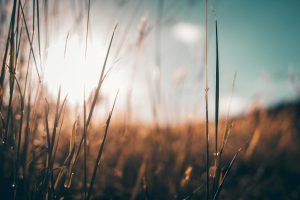Many of us have, occasionally, experienced an attack of anxiety. It often seems worse in the middle of the night, because there is no one to talk us down “off the ledge,” so to speak.
 So we lay there with our hearts pounding and our minds racing, imagining all the worst possible scenarios (none of which might even happen).
So we lay there with our hearts pounding and our minds racing, imagining all the worst possible scenarios (none of which might even happen).
We can’t seem to shut our brains off like we can during the day, when we can use distractions to keep us from worrying.
Some anxiety is normal – preparing for a test, job interviewing, or waiting to hear medical test results, for instance. This type of anxiety is a normal, healthy state.
It’s when we worry about things that are not realistic or haven’t happened yet, that anxiety becomes a problem.
 Healthy anxiety occurs when we are confronted with real problems or dangers. For example, if I am walking through the woods, and I hear rustling in the trees, I may experience some anxiety as I’m alone.
Healthy anxiety occurs when we are confronted with real problems or dangers. For example, if I am walking through the woods, and I hear rustling in the trees, I may experience some anxiety as I’m alone.
If it turns out to be a bear, my anxiety will issue a warning that I need to do something. The danger is indeed real.
Once I’ve escaped the bear (by running as fast as I can away from it) and know that I’m safe, my system calms down. However, if I hear another noise, my nervous system will go into overdrive, even if it turns out to be a baby rabbit.
 Because my nervous system has been activated, even something as harmless as a baby rabbit causes my system to jump into action once again.
Because my nervous system has been activated, even something as harmless as a baby rabbit causes my system to jump into action once again.
The more our nervous system is stimulated, the more frequently we will experience the sensations and feelings of an anxiety attack. Our systems are now highly reactive to any kind of event, even those that normally wouldn’t make us feel nervous or anxious.
How to Stop an Anxiety Attack at Night
Here are some things you can do when you can’t sleep or fall asleep due to anxiety or stress, and you’re wondering how to stop an anxiety attack at night:
- Change locations. Get out of bed. Lying there awake worrying will only make it worse. So get up and go into another room or sit in a chair.
- Distract yourself with a book or a television show. Make it something that will take your mind away from the problems that are worrying you.
- Don’t clock watch – the temptation to look at the clock and worry that you aren’t getting enough sleep is great in the middle of the night, but can also increase your anxiety. One trick I use is to think of the number of hours I still have to sleep, instead of thinking “I only have two hours til I have to get up.” Thinking “I still have two hours to sleep” is more encouraging, and will help to ease your mind.
- Try journaling your anxieties. When our minds are swirling with worry, it often helps to write them down. Take note of how realistic some of them are. When we begin “going down the drain” of worry, it helps to actually take a look at what’s bothering us. Sometimes, that’s all it takes to relax our bodies and our minds.
- Mindfulness exercises can help as well, although when we are in anxiety states, it’s often difficult to calm our minds. Mindfulness takes practice, so be patient with yourself if you aren’t able to stay focused.
- Practice deep breathing – when focusing on your breath, it’s difficult to also focus on your anxiety.
- Use an anxiety release app on your phone. Mark Grant created one called aptly “Anxiety Release” that will help with relaxation. There are many others that will work as well.
 Turn off your electronics at least 30 minutes before bed so that your mind can begin to relax for sleep. One of the reasons we don’t worry as much during the day is because we are active and occupied with other things. Evenings and night are the times when we don’t have as much going on and we begin to worry.
Turn off your electronics at least 30 minutes before bed so that your mind can begin to relax for sleep. One of the reasons we don’t worry as much during the day is because we are active and occupied with other things. Evenings and night are the times when we don’t have as much going on and we begin to worry.- Limit caffeine and alcohol consumption before bed.
- Talk with a therapist if these other suggestions don’t seem to be working. A trained therapist can help you find the causes behind your anxiety, and give you tools to deal with them.
If you are struggling with anxiety, feel free to reach out to any of the counselors in our counselor directory for help.
“Grass in Sunlight”, Courtesy of Tyler Gebhart, Unsplash.com; CC0 License; “Cloudy Day at the Beach”, Courtesy of Quino Al, Unsplash.com; CC0 License; “Bird in Flight Over Sea”, Courtesy of Alex Wigan, Unsplash.com; CC0 License; “Tall Grass”, Courtesy of Joseph Barrientos, Unsplash.com; CC0 License


